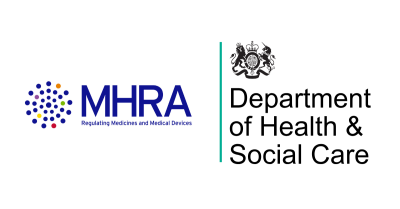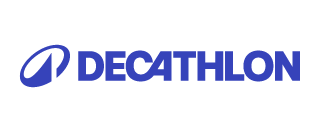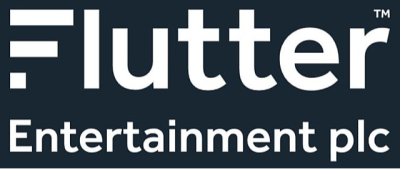Conference Day Two - Wednesday 15th April
Morning Plenary Session
8:00 am - 8:45 am
Registration & Breakfast
8:50 am - 9:00 am
Chairs Opening Remarks
9:00 am - 9:30 am
Morning Plenary Panel Discussion: Morning Plenary Panel Discussion: Navigating the Global AI Regulatory Landscape
Emily Campbell-Ratcliffe -
Head of Private Sector AI Adoption, Governance & Skills,
Department for Science, Innovation and Technology (DSIT)
Kai Zenner - Head of Office and Digital Policy Adviser for MEP Axel Voss (EPP group), European Parliament
Gabriela Commatteo - Head of AI Regulation, Policy and Projects, MHRA
The EU AI Act is setting the pace for AI regulation, but it is far from the only framework shaping enterprise adoption. The UK has opted for a more sector-led model, the US is layering federal guidance with state-level rules, and governments worldwide are weighing innovation against oversight. For global organisations, the challenge is clear: how to operationalise compliance across multiple jurisdictions while still driving competitive advantage. This panel explores the state of play, key risks, and practical steps for building resilient governance.
• Unpacking the EU AI Act and its implications for high-risk systems
• Comparing approaches across the UK, US, and other major jurisdictions
• Building agile compliance strategies that enable global AI innovation at scale
Leave with clarity on regulatory trends and actionable insights for cross-border compliance.

Emily Campbell-Ratcliffe
Head of Private Sector AI Adoption, Governance & SkillsDepartment for Science, Innovation and Technology (DSIT)
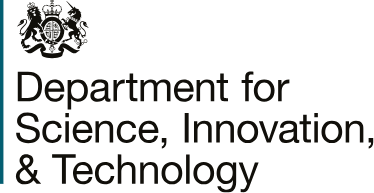

Kai Zenner
Head of Office and Digital Policy Adviser for MEP Axel Voss (EPP group)European Parliament
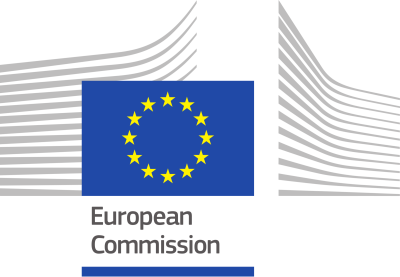
9:30 am - 10:00 am
Session details to be announced
10:00 am - 10:30 am
Morning Plenary Keynote: From Innovation to Institution: Building a GenAI Function at the BBC
Jon Howard -
Head of Generative AI,
BBC
In a publicly funded organisation like the BBC, innovating at the speed of AI requires more than enthusiasm - it demands rigour, vision, and systems that can turn creativity into capability. As Head of Generative AI, Jon is helping the BBC establish a GenAI Hub: a function designed to enable safe, meaningful and scalable adoption of generative AI across editorial, production, and operations.
This session will explore what it takes to move from isolated experiments to organisation-wide capability. Using examples such as the Bitesize AI Tutor prototype, as well as emerging work in journalism and production, Jon will delve into case studies and unpack how the BBC is building the frameworks, partnerships, and governance needed to deliver value responsibly.
Key themes:
• From pilots to platforms: how early prototypes inform strategy without overpromising product launches
• Unlocking value in the newsroom and production: incubating agentic tools for journalism, content creation, and cross-platform efficiency
• Balancing safety and speed: lightweight triage and risk processes that enable rapid but responsible experimentation
10:30 am - 11:00 am
Morning Plenary Keynote: Responsible AI in an Era of Agents
Oliver Patel -
Head of Enterprise AI Governance,
AstraZeneca
As AI systems become increasingly autonomous, governance cannot remain static. This panel brings together leaders from highly regulated industries to explore how they are embedding dynamic guardrails into AI operations, ensuring safety and accountability without stalling innovation.
• Operationalising governance for multi-agent and self-directed workflows
• Meeting evolving regulatory standards across global jurisdictions
• Balancing innovation speed with ethical and compliance frameworks
Learn how to design governance models that evolve with the pace of AI autonomy.
11:00 am - 11:30 am
Morning Coffee Break
Morning Streamed Sessions
Stream A – Governance & Security
11:30 am - 12:00 pm Presentation/Case Study: Smarter, Smaller, Responsible: Building Scalable GenAI for Global Retail at Decathlon Pratyush Sinha - Senior Director of Responsible AI, DecathlonStream A – Governance & Security
12:00 pm - 12:30 pm Presentation/Case Study: Responsible by Design: Scaling AI Governance and Enablement at Mastercard Adeline Pelletier - Director Data & AI Strategy, MastercardAs GenAI becomes embedded into financial services, the challenge isn’t just innovation - it’s implementation at scale, with trust, tooling and transparency. At Mastercard, Adeline is driving the development of evaluation toolkits and guardrails that support safe experimentation across the enterprise. From evaluating both traditional and generative models to preparing for the EU AI Act, her team is building the platforms and processes that enable product teams to explore agentic commerce and next-gen GenAI use cases - without compromising on trust, tone, or security.
• Building automated toolkits for model evaluation, bias detection and GenAI guardrails
• Enabling safe exploration of agentic commerce use cases across digital product teams
• Aligning AI governance and platform strategy across Chief Data Office and AI CoE
Stream A – Governance & Security
12:30 pm - 1:00 pm Session details to be announcedStream A – Governance & Security
1:00 pm - 1:30 pm Panel Discussion: The Future of AI Governance - Global Perspectives on Regulation and Responsibility Regardt Botes - Lead IP Counsel, Breakthrough Innovation & Senior LC (Global Digital & AI), DiageoGraham Ross - Head of Responsible AI, Centrica
Suzanne Brink - Group Head of Responsible AI, Lloyds Banking Group
This panel brings together industry leaders and compliance experts to discuss what governance will look like as AI becomes autonomous - and how organisations can harmonise policies across global markets.
• Understanding regulatory trends shaping the next five years
• Aligning enterprise governance with multi-region compliance demands
• Preparing for cross-industry collaborations on responsible AI standards
Leave with a clear view of the regulatory horizon and practical steps to future-proof your governance strategy.

Regardt Botes
Lead IP Counsel, Breakthrough Innovation & Senior LC (Global Digital & AI)Diageo

Stream B – Infrastructure & Architecture
11:30 am - 12:00 pm Presentation/Case Study: From Hype to Harmony: Operationalising Agent Workflows at BP Natalia Konstantinova - Global Architecture Lead in AI, bpWith dozens of AI agents built across BP’s functions - from data retrieval to task orchestration - the challenge isn’t whether the technology works, it’s how to make it usable, safe and enterprise-ready. Natalia leads work on BP’s internal Multi-Agent Control Platform (MCP) and emerging agent-to-agent (A2A) protocols, helping unify fragmented agent systems into cohesive, business-ready workflows. This session shares lessons on scaling adoption, governance, and data integration.
• Designing agent-to-agent systems for secure, predictable enterprise workflows at scale
• Solving for adoption: architecture, data readiness, and investment in business-side change
• Building practical guardrails and evaluation methods for real-world agentic reliability
Stream B – Infrastructure & Architecture
12:00 pm - 12:30 pm Presentation/Case Study: Green AI in the Public Sector: Designing Sustainable Intelligence at the Met Police Johnny Wolf - Head of Enterprise Architecture & FinOps Lead, Metropolitan PoliceAs AI adoption accelerates, so does its environmental impact. At the Metropolitan Police, Johnny is helping to shape a future where sustainability is woven into enterprise architecture - connecting emerging AI capabilities to the realities of energy use, cloud consumption, and carbon impact. As a member of the Green Software Foundation and a leading voice in the UK’s push for Green AI standards, he offers a timely and important perspective: how public institutions can pursue innovation responsibly, through architectures that support both intelligence and impact reduction.
• Connecting AI strategy to carbon reduction: why Green AI must be part of the plan
• Designing for sustainability: cloud, compute and governance choices that reduce emissions
• Aligning with Green Software Foundation standards to future-proof responsible public AI
Stream B – Infrastructure & Architecture
12:30 pm - 1:00 pm Session details to be announcedStream B – Infrastructure & Architecture
1:00 pm - 1:30 pm Panel Discussion: The Real ROI of AI Jie Zheng - Technology Team Lead - TUI Innovation Hub – Sourcing, TUIAhmed Elahi - Senior Director of AI & Technology Transformation, SkyShowtime
Anton Hinel - VP, Machine Learning Research, American Express
AI investment is accelerating but proving a tangible near-term business value remains a challenge. This panel brings together enterprise AI leaders to unpack how to garner continuous internal buying, collaborate across non-technical functions, and position AI as a core business enabler - not just a technical experiment.
• Defining and measuring the real impact of AI investments: cost, productivity, revenue, and beyond
• Securing executive support and funding for AI products in competitive prioritisation environments
• Communicating value to non-technical stakeholders and navigating organisational AI illiteracy
• Embedding AI thinking across product, operations, and business strategy
• Evolving your role from technical lead to enterprise AI change agent
Stream C – GenAI in Action
11:30 am - 12:00 pm Presentation/Case Study: Case Study: Scaling GenAI and Agentic AI - Lessons from the AA’s Journey Raghava Krishna - Technology Director – Digital & AI, The AAThe AA has been steadily building its capabilities in generative and agentic AI, testing use cases across insurance, claims, HR, finance, and customer operations. Alongside this, a Centre of Excellence has been established to provide governance, share learnings, and guide adoption. This session highlights how learning and governance are driving scale.
• Exploring early GenAI and agentic AI use cases across core business functions
• Establishing a Centre of Excellence to coordinate adoption and drive best practice
• Capturing lessons learned to prepare for enterprise-wide scale-up next year
Leave with practical insights into how the AA is turning experimentation into enterprise-scale impact.
Stream C – GenAI in Action
12:00 pm - 12:30 pm Presentation/Case Study: Beyond Guardrails: Thermo Fisher’s GenAI Playbook for Regulated Clinical Development Bryan Carmichael - Director, Digital Innovation & Data Science, Thermo Fisher ScientificGenAI in clinical development must be governed, repeatable, and auditable. Bryan shares Thermo Fisher’s scaling approach - an isolated enterprise LLM, ring-fenced patient-impacting workflows, and a ruthless ROI path - applied across ~3,000 global clinical trials each year.
• Segmenting patient-impacting vs business tasks; apply stricter controls where harm possible exists.
• Operating isolated enterprise LLM with auditable prompts, retrieval, outputs, and lineage tracking.
• Prototyping small, fail fast; scale only with ROI and regulatory acceptance evidence.
A compliance-first blueprint you can defend to MHRA/FDA - controls, evaluation, documentation - and a funding cadence that prioritises value over novelty.
Stream C – GenAI in Action
12:30 pm - 1:00 pm Session details to be announcedStream C – GenAI in Action
1:00 pm - 1:30 pm Panel Discussion: Driving Societal Impact with GenAI - From Healthcare to Education Pascal Hetzscholdt - Senior Director, AI Strategy & Content Integrity, WileyDenys Pak - Associate Dean, EoE Lead for Clinical Entrepreneurs & Emerging Technologies, NHS England
GenAI is transforming critical sectors, from personalised learning to clinical research. This panel highlights real-world deployments and the strategies required to deliver impact responsibly.
• Scaling AI in public services without widening digital inequality
• Measuring social impact beyond commercial KPIs
• Partnering across ecosystems to accelerate innovation in high-impact sectors
Leave with practical insights into using AI as a force for positive societal change.
Denys Pak
Associate Dean, EoE Lead for Clinical Entrepreneurs & Emerging TechnologiesNHS England

Lunch
1:30 pm - 2:30 pm
Networking Lunch
Afternoon Streamed Sessions
Stream A – Governance & Security
2:30 pm - 3:00 pm Presentation/Case Study: From Model to Application: Rethinking GenAI Risk Management at Danske Bank Khaled Alizai - Chief GenAI Model Evaluation Expert, Danske BankAs financial institutions race to adopt GenAI, the biggest risks aren’t just in the models - they’re in how those models are applied. At Danske Bank, Khaled is building a specialist model evaluation function to do just that: connect technical robustness to practical deployment, bridging the gap between regulation, risk and real-world GenAI use cases. With a mandate to evaluate GenAI applications within a three-lines-of-defence framework, and to interpret evolving EU AI Act requirements, this session shares a first-mover perspective on what responsible GenAI adoption really looks like in modern banking.
• Evaluating GenAI applications - not just models - within enterprise risk frameworks
• Interpreting and applying EU AI Act principles to real-world GenAI deployments
• Building a new kind of MRM function: beyond credit models, into AI-enabled operations
Stream A – Governance & Security
3:00 pm - 3:30 pm Presentation/Case Study: Regulating Innovation: AI in Live Testing at the FCA Edmund Towers - Head of Advanced Analytics & Data Science Units, FCAFor many financial services firms, the biggest barrier to GenAI deployment isn’t capability - it’s compliance. In response, the Financial Conduct Authority has launched AI in Live Testing: a first-of-its-kind regulatory initiative that allows firms to trial real-world GenAI use cases with consumers, under supervision and with clear assurance mechanisms. In this session, Ed shares early insights from the programme, and how the FCA is enabling innovation with guardrails, helping firms move from POC to production with confidence, not caution.
• Enabling safe GenAI deployment through the FCA’s supervised ‘Live Testing’ environment
• Supporting firms in building scalable assurance and governance from the start
• Learning from live implementations: what’s working, what’s not, and what’s next
Stream A – Governance & Security
3:00 pm - 3:30 pm Panel Discussion: Balancing Compliance and Innovation in an AI-First World Ioana Marchis-Rusu - Senior Emerging Technology Partner, Flutter EntertainmentStream B – Infrastructure & Architecture
2:30 pm - 3:00 pm Presentation/Case Study: Digital Twins in Motion: Building Modular, AI-Driven Architecture at BMW Ahmed Ebada - Senior AI Product Manager, BMW GroupAt BMW, every car has a story - from production to end-of-life. Ahmed leads efforts to capture and orchestrate that story through modular digital twins, designed to power internal use cases across compliance, automation, battery tracking, and real-time monitoring. From a proprietary digital twin platform that integrates AI workflows, to use cases spanning regulatory readiness and software update diagnostics, this session explores how BMW is operationalising its data infrastructure - turning every vehicle into a living, evolving data product.
• Building scalable digital twin architecture from production to post-lifecycle automation
• Embedding AI across quality checks, compliance, battery tracking and software monitoring
• Designing modular data products for internal teams to self-serve and scale use cases
Stream B – Infrastructure & Architecture
3:00 pm - 3:30 pm Presentation/Case Study: From Experimentation to Execution: Building the AI Backbone at The Economist Bogdan Vrusias - Global Head of AI and Data Engineering, The EconomistWith a rich background in research, academia, startups and at AWS, Bogdan joined The Economist to do something bold: build AI infrastructure where none existed. In this session, he shares how he's helped transform a landscape of fragmented ideas into a functioning AI platform - reducing model deployment time from six months to minutes, automating ML workflows, and preparing the organisation to responsibly integrate generative and agentic AI. It’s not just about models - it’s about people, processes and a culture that can evolve as fast as the tech.
• Operationalising GenAI: moving from experimentation to production-ready infrastructure
• Building sustainable, scalable AI workflows that balance agility with governance
• Managing culture change: enabling teams without rushing into every shiny new tool
Stream B – Infrastructure & Architecture
3:30 pm - 4:00 pm Panel Discussion: Enterprise AI Architecture - Vendor Strategy & Platform Consolidation Ajwad Ali - Head of AI Engineering, AXASatya Bajpai - Managing Director, Technology Investment Banking, BTIG
Stream C – GenAI in Action
2:30 pm - 3:00 pm Presentation/Case Study: Searching for Truth: Deepfakes, Labelling & the New Rules of Online Trust Jessica Smith - Technology Policy Manager, OfcomAs generative AI reshapes how we search, consume and interpret information online, the need for reliable attribution and effective labelling is more urgent than ever. At Ofcom, Jess is leading research into how users respond to AI-generated content - from watermarks and metadata to annotations like Community Notes - and how these measures influence trust, interpretation, and onward sharing. Drawing on insights from Ofcom’s Deepfake Defences 2 report, this session explores what’s working, what’s not, and what platforms, policymakers and users need to know.
• Evaluating watermarking and metadata: how robust are they to basic manipulation?
• Analysing user response to AI labels and annotations across different content formats
• Understanding how chatbots and GenAI are shaping online search and fact-checking behaviour
Stream C – GenAI in Action
3:00 pm - 3:30 pm Presentation/Case Study: Scaling AI for Impact: Leadership, Operating Models, and Measurable Outcomes Natalija Bezubova - Global Head of Enterprise Analytics, Entain- Redesign operating models to embed AI into enterprise-wide business transformation.
- Driving AI leadership through governance, culture, and empowerment across the organisation.
- Measuring impact with a four-lens framework: financial, strategic, operational, and adoption.
Stream C – GenAI in Action
3:30 pm - 4:00 pm Panel Discussion: Building AI Literacy for the Public and Professionals Philippa Penfold - Responsible AI & Data Science Manager, ElsevierGraham Ross - Head of Responsible AI, Centrica
- Tailoring AI education to diverse professional and public audiences
- Embedding critical thinking to counter misinformation and misuse
- Linking AI literacy initiatives to business transformation goals
Afternoon Plenary Session
4:00 pm - 4:30 pm
Afternoon Refreshment Break
4:30 pm - 5:00 pm
Afternoon Plenary Keynote – Scaling Intelligence for Real-World Impact
Julia Peyre -
Head of AI Strategy and Innovation,
Schneider Electric
5:00 pm - 5:30 pm
Afternoon Plenary Keynote: AI Innovation in the Shipping Industry: From Proofs of Concept to Real-World Impact
Jeremy Steventon Barnes -
Chief Technology & Information Officer,
V.Group
As Chief Technology Officer at V.Group, Jeremy is leading efforts to harness AI and GenAI across one of the world’s most complex and global industries. With vast proprietary datasets and operations spanning crews at sea to on-shore command centres, the shipping sector presents both enormous opportunities and unique challenges for AI adoption. Jeremy will share how V.Group is approaching innovation in this space - from early proofs of concept using specialised models to unlock unstructured data, to predictive systems that transform compliance and risk management.
• Exploring how shipping’s complexity shapes AI opportunities and challenges at scale.
• Moving from proofs of concept to applied AI that delivers measurable operational impact.
• Building data access and trust across crews, shore operations, and external stakeholders.
5:30 pm - 6:00 pm
Afternoon Plenary Panel Discussion: What Comes After Autonomy? The Future of Enterprise AI
Rohit Dhawan -
Group Head of AI,
Lloyds Banking Group
Irina Mirkina - Chief AI Scientist, Fugro
Generative AI was the first leap, autonomy is the second - so what’s next? This keynote offers a forward-looking view on neuro-symbolic AI, human-AI symbiosis, and the policy, compute, and ethics challenges shaping the next decade.
• Tracking emerging models and architectures beyond LLMs
• Preparing for convergence across AI, IoT, and intelligent automation
• Anticipating next-generation risks, from sustainability to weaponisation
Leave with a long-term perspective to guide enterprise investment and innovation strategies.

